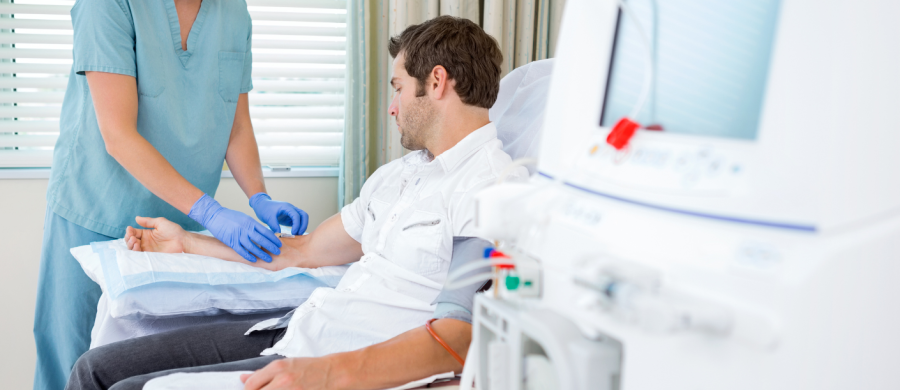One of the ways to perform dialysis is by inserting a permanent catheter. Proper care of the catheter is critical to prevent infections and complications that can jeopardize both the effectiveness of dialysis and the health of the patient. In this article, we will discuss the basic steps and best practices for maintaining the functionality of your dialysis catheter.
CATHETER CARE TIPS
- Make sure to change the dressings regularly. This should be done after each dialysis procedure, that is, every few days.
- If the catheter dressing is dry and clean, you do not need to change it yourself. However, you can ask the nurse at the dialysis center to teach you so that you are prepared in case you need to.
- The catheter site should not get wet. You can clean your upper body with a damp cloth. If you intend to shower, cover the catheter with a waterproof dressing, but in any case you should avoid getting water in this area as much as possible.
- Wear comfortable loose clothing. Avoid clothing and accessories (eg, long necklaces) that can catch on the catheter or dressing.
- Avoid situations where the catheter may be tugged or dislodged (contact sports, carrying bulky objects, etc.)
WHAT ARE THE SIGNS OF A CATHETER INFECTION?
Your most important “task” when using a dialysis catheter is to watch for infections. Inform your dialysis center immediately if:
- You notice redness, swelling, pain, or fluid collection around the catheter or
- You have a fever, chills or fatigue.
HOW DO I PREVENT DIALYSIS CATHETER INFECTION?
When using a dialysis catheter, strict adherence to hygiene rules is mandatory. It will protect you from potentially life-threatening conditions (sepsis), because the catheter can easily become a portal of entry for infections.
- Never touch the catheter or the dressing with dirty hands. Always wash your hands with soap and water and wear gloves before changing your dressing. Make sure your healthcare team also does the same.
- Keeping the area around the catheter clean and dry. Moisture around the catheter helps the growth of microorganisms and increases the risk of skin irritation and infection.
By following the rules when using a dialysis catheter, you help ensure your treatment is safe and effective. Always keep in touch with your medical team and seek immediate help if you suspect an infection or experience problems with your dialysis catheter.









